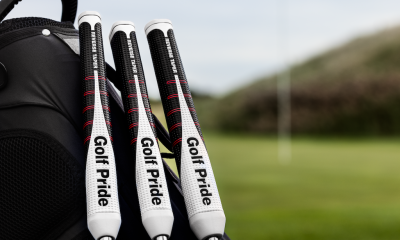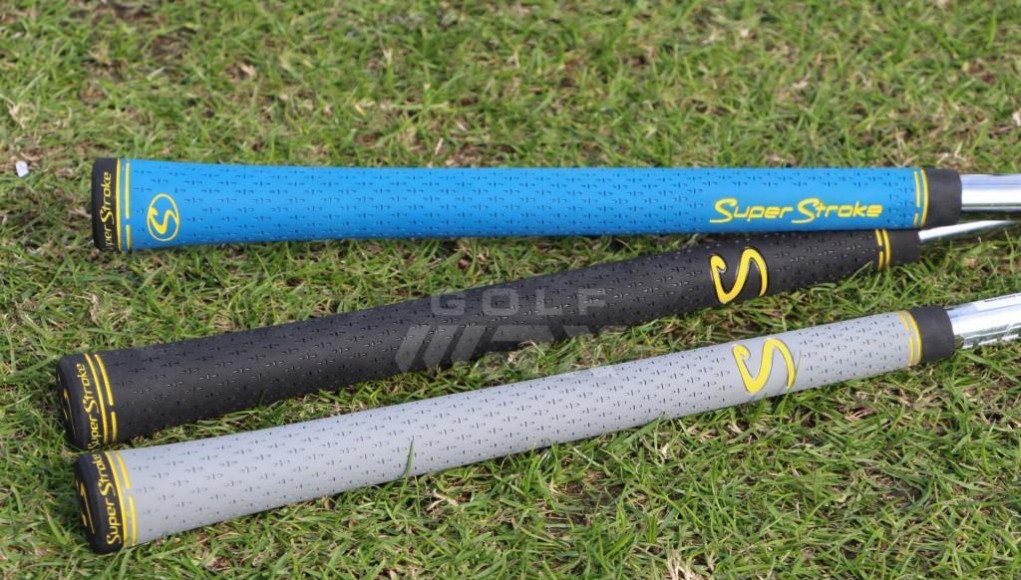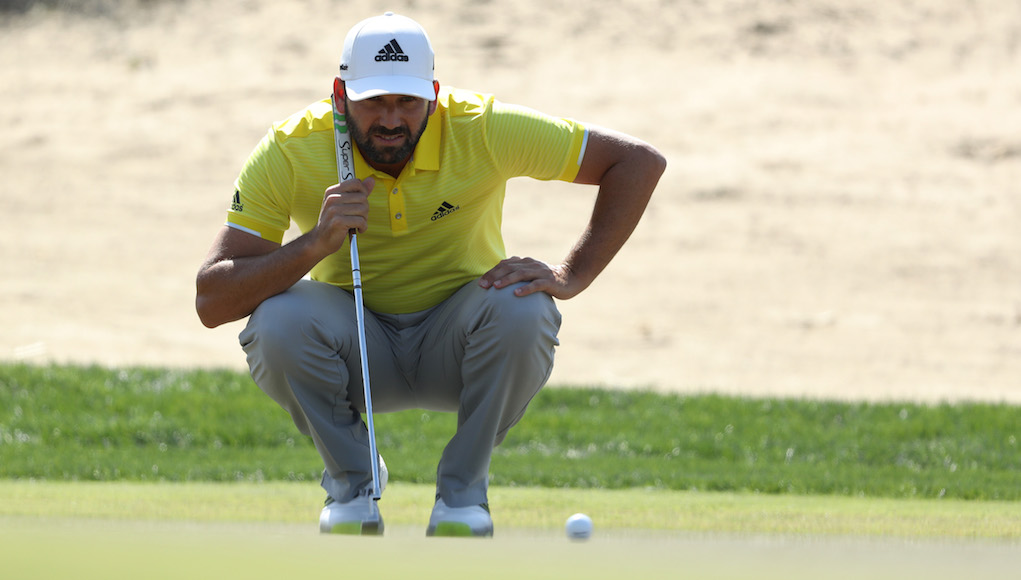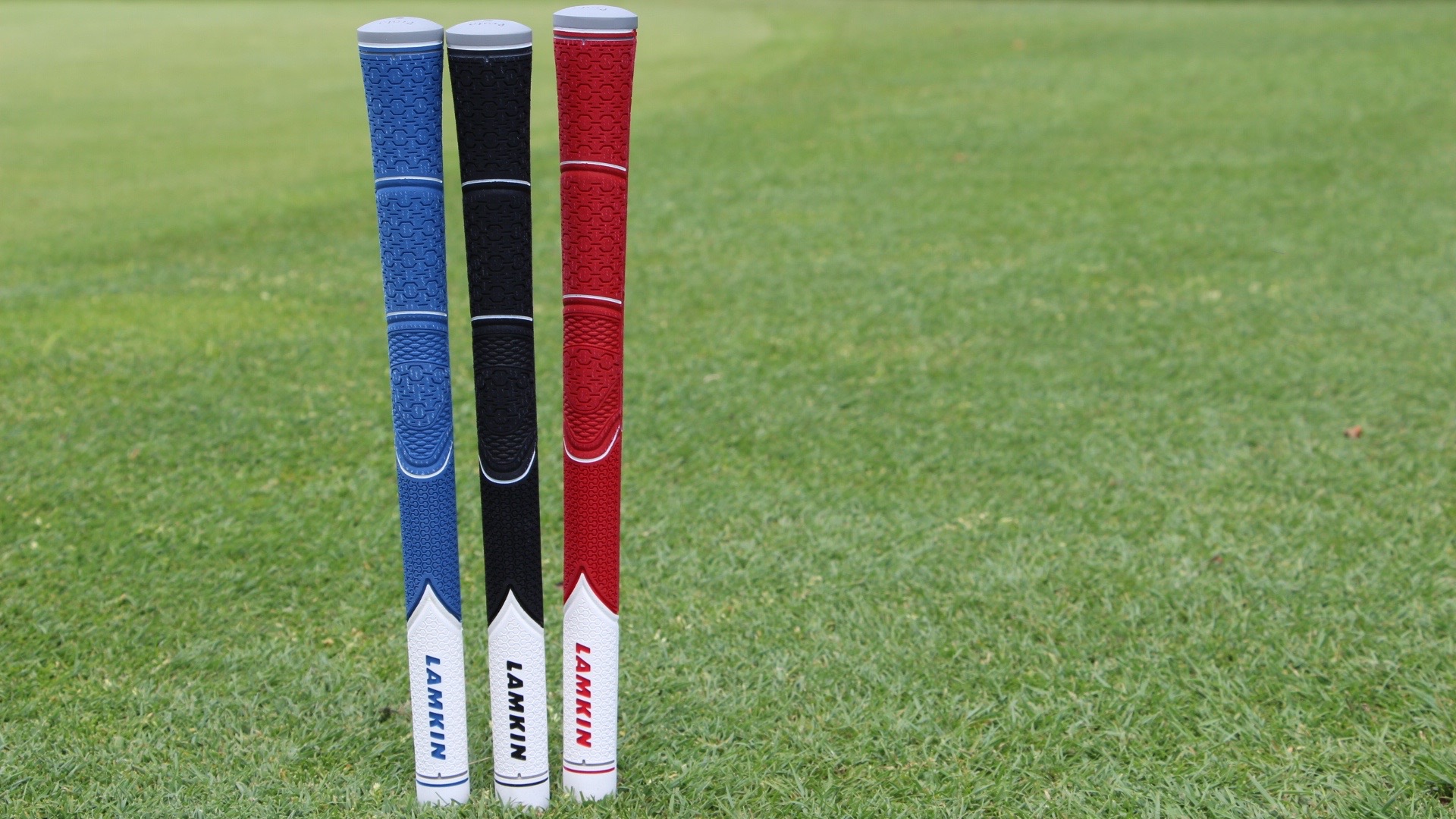Opinion & Analysis
A golfer’s guide to grip care

If you have played golf for any length of time, you probably have reached a point where you had to regrip your clubs. In doing so, you may have noticed that grips are not very cheap these days, especially the high-end models from Golf Pride and Iomic that I like to play.
Making things worse is that most shops charge around $2-to-$3 per club for their regripping services. So what can golfers do to protect their grips? After all, the grip is the one part of a golf club that we actually hold during the swing. I’ve outlined some steps that will help golfers everywhere ensure proper function, longevity and untimely prevent erosion.
Cleaning
I can not stress enough how important it is to clean your grips. This is the one simple step that golfers can do to make their grips last a long time. The simplest way to do this is with a bucket of warm soapy water and a soft bristle brush. Simply place a tee in the hole at the end of your grip (it will prevent water from getting inside the shaft) dip the grip in the soapy water and gently scrub them clean. When you are finished, dry the grips off with a clean towel. This should be performed once every few rounds.
If you are like me and are a little obsessed with taking care of your gear, here are some common products I’ve used to help keep my grips feeling extra tacky.
- Windex Glass Cleaner: The streak-free glass surface cleaner will leave your grips streak free as well. Spray on a dry grip and wipe off with a damp towel.
- Welches Tire Bleach: Good enough to clean your vehicle’s tires and will do the same for your grips. Spray on a wet grip, gently scrub the grip and rinse off.
- GoJo (Orange Hand Cleaner): Designed to remove motor oil and grease from your hands, Gojo will work wonders for removing body oils from your grip. The grit mixed into the soap is an excellent exfoliator and will help remove even excess oil and grime. Rub thoroughly on a wet grip and rinse off.
- Clorox Sanitizing Wipes: These are great for that after round clean up. Keep a small pouch of them in your golf bag for quick access and cleaning. Gently wipe grip and wipe with a dry towel
- Scotch Brite Pad: If you have a very dirty grip or one that needs a little life restored, wet the grip and using a twisting motion with the Scotch-Brite pad to remove a light layer of the old rubber and restore the finish.
OK, we are past the point of cleaning or reviving a grip. So how can you tell when a grip has reached the end of its life?
If you notice any of the following, it’s time to change a grip.
- Smooth surfaces, either uniform across the grip or in isolated areas.
- Cracks.
- Shiny patches.
- Erosion of the painted areas or logos on your grips.
- Insufficient tack (slickness)
If you are unsure if you need new grips, remember that club experts recommend regripping your clubs once every year or every 40 rounds. Regardless of how often you play, ozone, heat, dirt and oils are constantly at work breaking down the materials that make up your grips. Also, keep in mind that because grip degredation happens over a period of time, you may not be as astute as noticing it as your playing partners.
When your buddies say, “Man, you need new grips,” you probably do.
Opinion & Analysis
The 2 primary challenges golf equipment companies face

As the editor-in-chief of this website and an observer of the GolfWRX forums and other online golf equipment discourse for over a decade, I’m pretty well attuned to the grunts and grumbles of a significant portion of the golf equipment purchasing spectrum. And before you accuse me of lording above all in some digital ivory tower, I’d like to offer that I worked at golf courses (public and private) for years prior to picking up my pen, so I’m well-versed in the non-degenerate golf equipment consumers out there. I touched (green)grass (retail)!
Complaints about the ills of and related to the OEMs usually follow some version of: Product cycles are too short for real innovation, tour equipment isn’t the same as retail (which is largely not true, by the way), too much is invested in marketing and not enough in R&D, top staffer X hasn’t even put the new driver in play, so it’s obviously not superior to the previous generation, prices are too high, and on and on.
Without digging into the merits of any of these claims, which I believe are mostly red herrings, I’d like to bring into view of our rangefinder what I believe to be the two primary difficulties golf equipment companies face.
One: As Terry Koehler, back when he was the CEO of Ben Hogan, told me at the time of the Ft Worth irons launch, if you can’t regularly hit the golf ball in a coin-sized area in the middle of the face, there’s not a ton that iron technology can do for you. Now, this is less true now with respect to irons than when he said it, and is less and less true by degrees as the clubs get larger (utilities, fairways, hybrids, drivers), but there remains a great deal of golf equipment truth in that statement. Think about it — which is to say, in TL;DR fashion, get lessons from a qualified instructor who will teach you about the fundamentals of repeatable impact and how the golf swing works, not just offer band-aid fixes. If you can’t repeatably deliver the golf club to the golf ball in something resembling the manner it was designed for, how can you expect to be getting the most out of the club — put another way, the maximum value from your investment?
Similarly, game improvement equipment can only improve your game if you game it. In other words, get fit for the clubs you ought to be playing rather than filling the bag with the ones you wish you could hit or used to be able to hit. Of course, don’t do this if you don’t care about performance and just want to hit a forged blade while playing off an 18 handicap. That’s absolutely fine. There were plenty of members in clubs back in the day playing Hogan Apex or Mizuno MP-32 irons who had no business doing so from a ballstriking standpoint, but they enjoyed their look, feel, and complementary qualities to their Gatsby hats and cashmere sweaters. Do what brings you a measure of joy in this maddening game.
Now, the second issue. This is not a plea for non-conforming equipment; rather, it is a statement of fact. USGA/R&A limits on every facet of golf equipment are detrimental to golf equipment manufacturers. Sure, you know this, but do you think about it as it applies to almost every element of equipment? A 500cc driver would be inherently more forgiving than a 460cc, as one with a COR measurement in excess of 0.83. 50-inch shafts. Box grooves. And on and on.
Would fewer regulations be objectively bad for the game? Would this erode its soul? Fortunately, that’s beside the point of this exercise, which is merely to point out the facts. The fact, in this case, is that equipment restrictions and regulations are the slaughterbench of an abundance of innovation in the golf equipment space. Is this for the best? Well, now I’ve asked the question twice and might as well give a partial response, I guess my answer to that would be, “It depends on what type of golf you’re playing and who you’re playing it with.”
For my part, I don’t mind embarrassing myself with vintage blades and persimmons chasing after the quasi-spiritual elevation of a well-struck shot, but that’s just me. Plenty of folks don’t give a damn if their grooves are conforming. Plenty of folks think the folks in Liberty Corner ought to add a prison to the museum for such offences. And those are just a few of the considerations for the amateur game — which doesn’t get inside the gallery ropes of the pro game…
Different strokes in the game of golf, in my humble opinion.
Anyway, I believe equipment company engineers are genuinely trying to build better equipment year over year. The marketing departments are trying to find ways to make this equipment appeal to the broadest segment of the golf market possible. All of this against (1) the backdrop of — at least for now — firm product cycles. And golfers who, with their ~15 average handicap (men), for the most part, are not striping the golf ball like Tiger in his prime and seem to have less and less time year over year to practice and improve. (2) Regulations that massively restrict what they’re able to do…
That’s the landscape as I see it and the real headwinds for golf equipment companies. No doubt, there’s more I haven’t considered, but I think the previous is a better — and better faith — point of departure when formulating any serious commentary on the golf equipment world than some of the more cynical and conspiratorial takes I hear.
Agree? Disagree? Think I’m worthy of an Adam Hadwin-esque security guard tackle? Let me know in the comments.
@golfoncbs The infamous Adam Hadwin tackle ? #golf #fyp #canada #pgatour #adamhadwin ? Ghibli-style nostalgic waltz – MaSssuguMusic
Podcasts
Fore Love of Golf: Introducing a new club concept

Episode #16 brings us Cliff McKinney. Cliff is the founder of Old Charlie Golf Club, a new club, and concept, to be built in the Florida panhandle. The model is quite interesting and aims to make great, private golf more affordable. We hope you enjoy the show!
Opinion & Analysis
On Scottie Scheffler wondering ‘What’s the point of winning?’

Last week, I came across a reel from BBC Sport on Instagram featuring Scottie Scheffler speaking to the media ahead of The Open at Royal Portrush. In it, he shared that he often wonders what the point is of wanting to win tournaments so badly — especially when he knows, deep down, that it doesn’t lead to a truly fulfilling life.
View this post on Instagram
“Is it great to be able to win tournaments and to accomplish the things I have in the game of golf? Yeah, it brings tears to my eyes just to think about it because I’ve literally worked my entire life to be good at this sport,” Scheffler said. “To have that kind of sense of accomplishment, I think, is a pretty cool feeling. To get to live out your dreams is very special, but at the end of the day, I’m not out here to inspire the next generation of golfers. I’m not out here to inspire someone to be the best player in the world, because what’s the point?”
Ironically — or perhaps perfectly — he went on to win the claret jug.
That question — what’s the point of winning? — cuts straight to the heart of the human journey.
As someone who’s spent over two decades in the trenches of professional golf, and in deep study of the mental, emotional, and spiritual dimensions of the game, I see Scottie’s inner conflict as a sign of soul evolution in motion.
I came to golf late. I wasn’t a junior standout or college All-American. At 27, I left a steady corporate job to see if I could be on the PGA Tour starting as a 14-handicap, average-length hitter. Over the years, my journey has been defined less by trophies and more by the relentless effort to navigate the deeply inequitable and gated system of professional golf — an effort that ultimately turned inward and helped me evolve as both a golfer and a person.
One perspective that helped me make sense of this inner dissonance around competition and our culture’s tendency to overvalue winning is the idea of soul evolution.
The University of Virginia’s Division of Perceptual Studies has done extensive research on reincarnation, and Netflix’s Surviving Death (Episode 6) explores the topic, too. Whether you take it literally or metaphorically, the idea that we’re on a long arc of growth — from beginner to sage elder — offers a profound perspective.
If you accept the premise literally, then terms like “young soul” and “old soul” start to hold meaning. However, even if we set the word “soul” aside, it’s easy to see that different levels of life experience produce different worldviews.
Newer souls — or people in earlier stages of their development — may be curious and kind but still lack discernment or depth. There is a naivety, and they don’t yet question as deeply, tending to see things in black and white, partly because certainty feels safer than confronting the unknown.
As we gain more experience, we begin to experiment. We test limits. We chase extreme external goals — sometimes at the expense of health, relationships, or inner peace — still operating from hunger, ambition, and the fragility of the ego.
It’s a necessary stage, but often a turbulent and unfulfilling one.
David Duval fell off the map after reaching World No. 1. Bubba Watson had his own “Is this it?” moment with his caddie, Ted Scott, after winning the Masters.
In Aaron Rodgers: Enigma, reflecting on his 2011 Super Bowl win, Rodgers said:
“Now I’ve accomplished the only thing that I really, really wanted to do in my life. Now what? I was like, ‘Did I aim at the wrong thing? Did I spend too much time thinking about stuff that ultimately doesn’t give you true happiness?’”
Jim Carrey once said, “I think everybody should get rich and famous and do everything they ever dreamed of so they can see that it’s not the answer.”
Eventually, though, something shifts.
We begin to see in shades of gray. Winning, dominating, accumulating—these pursuits lose their shine. The rewards feel more fleeting. Living in a constant state of fight-or-flight makes us feel alive, yes, but not happy and joyful.
Compassion begins to replace ambition. Love, presence, and gratitude become more fulfilling than status, profits, or trophies. We crave balance over burnout. Collaboration over competition. Meaning over metrics.
Interestingly, if we zoom out, we can apply this same model to nations and cultures. Countries, like people, have a collective “soul stage” made up of the individuals within them.
Take the United States, for example. I’d place it as a mid-level soul: highly competitive and deeply driven, but still learning emotional maturity. Still uncomfortable with nuance. Still believing that more is always better. Despite its global wins, the U.S. currently ranks just 23rd in happiness (as of 2025). You might liken it to a gifted teenager—bold, eager, and ambitious, but angsty and still figuring out how to live well and in balance. As much as a parent wants to protect their child, sometimes the child has to make their own mistakes to truly grow.
So when Scottie Scheffler wonders what the point of winning is, I don’t see someone losing strength.
I see someone evolving.
He’s beginning to look beyond the leaderboard. Beyond metrics of success that carry a lower vibration. And yet, in a poetic twist, Scheffler did go on to win The Open. But that only reinforces the point: even at the pinnacle, the question remains. And if more of us in the golf and sports world — and in U.S. culture at large — started asking similar questions, we might discover that the more meaningful trophy isn’t about accumulating or beating others at all costs.
It’s about awakening and evolving to something more than winning could ever promise.



















Burt
May 15, 2014 at 12:26 am
You guys needs to get a friggin life
PeanutsDaddy
Nov 3, 2013 at 7:49 pm
Have never thought about sticking a tee in the end of the grip. Thank you for the tip.
ctwerner
Oct 1, 2013 at 10:57 am
I do not agree, look at http://golfweek.com/news/2010/feb/26/perez-changes-iron-shafts-putter-putting-grip/
Brandon Bowron
Sep 26, 2013 at 11:53 pm
I have used simple green too, which h is awesome, but I used a generic orange hand cleaner with pumice (for some reason the autozone by me didn’t have actual gojo) and it seemed to work really well.. I’ll try putting some clorox wipes in my bag… Baby wipes work wonders for almost everything too, especially golf shoes… Dont know if that would be a good grip option though…. Thanks again!
Matt
Sep 25, 2013 at 12:12 am
I use Simple Green and a hard bristle brush. Its an all natural cleaner with no chemical residue left over.
CairnsRock
Sep 24, 2013 at 1:12 am
I just used Simoniz Tire Cleaner with Bleche -Wite on the shiniest, greasiest golf pride grips you have ever seen.
Wet the grip, spray on, use hard bristle brush to scrub, rinse off, dry with towel.
They look like brand new grips.
Not any tire cleaner will work. Bleche – Wite is the active ingredient.
chuck harvey
Sep 23, 2013 at 3:00 pm
I have used COMET clenser for ever ,wet, sprinkle comet,scrub.
Kadin Mahmet
Sep 24, 2013 at 12:18 am
I never tried that one…another great DIY tip..thank you!
Leif
Sep 22, 2013 at 11:36 pm
Thanks for the tips! I have used the Clorox wipes exclusively for a couple of years now..they work great!! Will try some of the other options too!!
Kadin Mahmet
Sep 23, 2013 at 10:25 am
Thank you for taking the time to read and post. Hard to beat the ease and simplicity of the Clorox Wipes :).